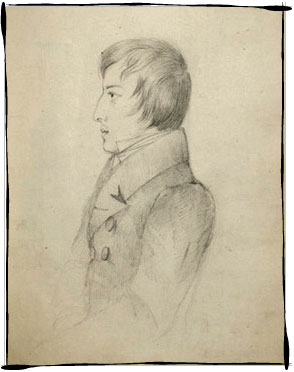



About the Mazurkas
The mazurka is a stylized dance form combining the features of three Polish folk dances: the brisk mazur, the lively oberek and the slow kujawiak. The first mazurkas were written as early as the end of the 18th century and had a certain utilitarian function – they introduced folk music to the salons of those days. The most noted among the composers who wrote mazurkas were Karol Kurpiński, Mikołaj Kleofas Ogiński, Maria Szymanowska and Józef Elsner. Elsner had a considerable impact on shaping the artistic development of Fryderyk Chopin, being first his teacher in Warsaw and later a good friend.
In Chopin’s oeuvre, mazurkas evolved to independent lyrical pieces, meditative in nature. They were like a lens in which the composer’s deepest recollections of his homeland were focused in the form of images of Polish folklore captured on staff paper. Chopin composed mazurkas practically throughout his lifetime: he published 41 of them in 11 opuses, further two were published separately and a dozen or so remained in manuscripts. A striking feature about Chopin’s mazurkas is their form, clear yet astonishingly diverse, ranging from miniatures to elaborate musical poems (an outstanding example is the Mazurka in C major Op. 6 no. 5, with a special form, senza fine), as well as deliberate limitation of textural devices. The elements of folk stylization include numerous modalisms (particularly the Lydian fourth and the Phrygian second), ostinatos, bourdon fifths, sophisticated ornamentation (such as ornaments used in bel canto and transposed to instrumental ground). The key role is played by rubato, i.e. intentional unsteadiness of tempo resulting from prolonging or shortening certain notes by the performer.
Although in his mazurkas Chopin never made any direct quotes from folk music, its echoes permeate their musical substance. The essence of those dance miniatures was probably best captured by the Polish writer Jarosław Iwaszkiewicz, who wrote: ‘In those fifty-odd short piano works the Polish composer contained the entire wealth of his soul, expressed his connection with the Polish people, offered the richness and refinement of his mind, and therefore we find in them such an abundance of musical ideas. Chopin’s mazurkas contain the recollections of all his voyages across Poland, memories of village songs and dances such as he came across in his wanderings on rural lanes’.
M.M.
Mazurka in C sharp minor, Op. 50 No. 3
The third Mazurka, in C sharp minor, is an absolute masterpiece. Not just inspired, but also excellently designed. At the turn of the 1840s, Chopin’s interest was aroused by a book published in Paris in 1837: a handbook on counterpoint by Cherubini. The effect of this increased interest in counterpoint, and of Chopin’s heightened knowledge and skill in this area, are the mazurkas of successive opuses, including Op. 50. Polyphonic technique was integrated into the texture of mazurkas, though sketched as if with a fine pen. Hereafter, three kinds of texture would coexist and intertwine in the music of the mazurkas: homophonic, which was typical of mazurkas, using chords to enhance the accompaniment melody, monophonic and polyphonic.
Chopin contrasted the delicacy and subtlety of the opening theme, expressed in the form of a canon, with the full, tempestuous sound of the mazur counter-theme. Two further motifs arise over the course of this work. First we hear the echo of a dizzying oberek – the relentless repetition of a single phrase, though always in a slightly different way. That is followed by a sostenuto, sung broadly to a kujawiak tune. The alternating pulsation of these four rhythms and tones of narration appears to be endless, yet everything here, from the very beginning, has been moving towards a final culmination… towards a contrapuntal, chromaticised stretto, rather odd in a mazurka, and its dramatic watershed, inflected with tragedy. The music then quietens and subsides, but does not die away.
One hardly wonders that George Sand, sensitive as she was to music, was all but euphoric. ‘Chopin has composed two adorable mazurkas’, she informed Eugène Delacroix, before adding, with perhaps deliberate hyperbole: ‘that are worth more than forty novels and express more than all the literature of the century’.
Author: Mieczysław Tomaszewski
A series of programmes entitled ‘Fryderyk Chopin's Complete Works’
Polish Radio 2

